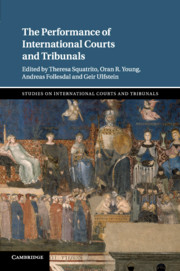Book contents
Part II
Published online by Cambridge University Press: 29 March 2018
Summary

- Type
- Chapter
- Information
- The Performance of International Courts and Tribunals , pp. 191 - 370Publisher: Cambridge University PressPrint publication year: 2018



